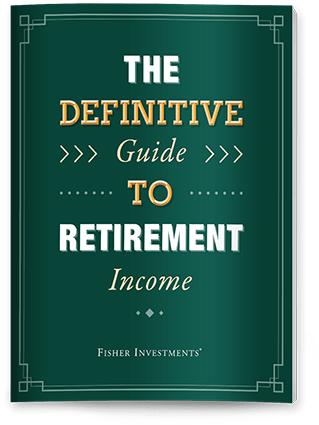Personal Wealth Management / Market Analysis
40,000 Points Later, the Dow Is Still Broken
A properly constructed index would have gotten here a long time ago.
Editors’ Note: MarketMinder doesn’t make individual security recommendations. The below are incidental to the broader theme we wish to highlight.
Yippeeeeeee! The Dow Jones Industrial Average hit 40,000 for the first time Thursday! Many likely anticipated confetti, poppers popping, kazoos and cake, perhaps maybe hunting for new ballcaps with “DOW 40K” stitched on the front. Then the index pulled back to close down, at 39,869.[i]
But whether you consider today’s intraday 40K the official one or want to call off the round-number party, consider: The Dow is still a broken index, and this fun milestone is meaningless.
Everyone knows the Dow, of course. It sits atop the ticker on the big financial news stations. It gets top billing at all the news outlets owned by its parent company. And it is the grandparent of all stock indexes, giving it that special place in everyone’s heart. So its round-number milestones are bigtime headline fodder.
But they don’t say much. Not only are they arbitrary and backward-looking, but the Dow doesn’t even represent the US stock market. It holds 30 stocks. The Wilshire 5000, which more or less covers the entire investible US stock market, includes 3,381 as of Q1’s end.[ii] An index that holds only 0.9% of America’s stocks is nowhere close to the stock market. It is a collection, chosen on arbitrary criteria, perhaps with the occasional help of a dartboard (we don’t know, we weren’t there). Companies gain entry once they achieve the mystical status of prominent and get dumped when they no longer fit the bill.
The stock market contains 11 sectors. The Dow? It covers just nine of them, omitting Utilities and Real Estate. Its only Materials company is its no-relation namesake—a Chemicals firm—meaning it excludes the universe of natural resources that comprise the sector globally. Its Communication Services holdings exclude the Tech-like companies that drive the sector’s returns in broad indexes. It holds a single Energy company and a single Bank. If it were a portfolio, it would get an “F” grade in diversification.
And the biggest sin? The Dow is price-weighted. Each company is weighted according to its stock price. Not the company’s actual size in dollars. Its largest constituent, UnitedHealth Group, is over 8% of the index.[iii] In the S&P 500, which is market cap-weighted, UnitedHealth is only about 1.0%.[iv] Number two in the Dow is Goldman Sachs, at over 7.5%.[v] In the S&P 500, Goldman is only about 0.3%.[vi] Apple’s Dow weighting, around 3%, is about half its weighting in the S&P 500. There are oddities like this up and down the list.
Price-weighting an index is useless. A stock’s price means nothing in terms of company size and clout. It is an after-effect of share count. A big company might have a mega-high number of shares to make its stock accessible to the broadest universe of investors possible, giving it a low share price. A tiny company may have few shares outstanding, giving it a higher price. You might as well weight an index by the number of corporate jets each company owns. Or the number of donuts served every Friday. Or or or.
All kidding aside, there is a logical reason for the Dow’s construction. Back in the 19th century, when Charles Dow calculated it with a pen and paper at the end of each trading day, stock price was the most readily available information about a company. (There were also far fewer companies then, hence the 30.) It was easy to write ‘em down, add ‘em up, spit out a number and move on.
But to paraphrase Colonel Sandurz from Spaceballs, we are at now now, in data-rich 2024, when it is also really easy to round up a company’s outstanding market value at the end of the day and crunch several hundred or thousand of them into an index level. Total market value is the true indicator of a company’s scale and clout. When computing power makes it easy-peasy to compute market cap-weighted indexes that cover a much bigger swath of the market, those indexes are the best to use. They are the ones that tell us how the market is really doing.
Case in point: The Dow hit 30,000 for the first time on November 24, 2020.[vii] Crossing 40,000 today, May 16, 2024, gives it a 33.333333333333% return in a little under three and a half years. In that same period, through yesterday’s close, the S&P 500 returned 54.1%.[viii] Part of the gap comes from correctly including reinvested dividends in the S&P 500 return. These are a key part of an investor’s total return, but the Dow excludes them. Yet even when you level the playing field, the S&P 500’s price return in this stretch is 46.0%.[ix] The Dow’s tiny size and flawed construction lagged the broader market considerably.
We will throw the Dow a tiny bone, though: The history of its milestones shows stock returns are exponential, illustrating how investors capture the power of compound growth. Its first round number—1,000—came in 1972, about three quarters of a century into its life.[x] The next came much faster, hitting 2,000 in 1987—it took only a 100% return, rather than the nearly 1,500% return necessary to get it from birth to 1,000 points.[xi] 3,000 arrived in 1991.[xii]
By the time 10,000 arrived in 1999, people were getting bored with the thousands, and the 5- and 10 thousand numbers became the milestones.[xiii] When the Dow had its worst day ever in points, on March 16, 2020, the nearly 3,000 point drop would have wiped it out in the late 1980s. But thanks to the mountain of compound growth since then, it was only a -12.9% drop.[xiv] And the 2,112-point snap back eight calendar days later was an 11.4% jump.[xv]
So thanks, Dow, for showing compound growth’s magic. And thanks, we guess, for being so broken and giving us a lesson to teach. Enjoy your big day. But you still aren’t the stock market.
[i] Source: FactSet, as of 5/16/2024.
[ii] Source: Wilshire Indexes, as of 5/16/2024.
[iii] Source: IndexArb.com, as of 5/16/2024.
[iv] Source: FactSet, as of 5/16/2024.
[v] See Note iii.
[vi] See Note iv.
[vii] “Dow Jones Industrial Average Crosses 30000 for First Time,” Akane Otani, The Wall Street Journal, 11/24/2020.
[viii] Source: FactSet, as of 5/16/2024. S&P 500 Index total return, 11/24/2020 – 5/15/2024.
[ix] Ibid. S&P 500 Index price return, 11/24/2020 – 5/15/2024.
[x] Ibid.
[xi] Ibid.
[xii] Ibid.
[xiii] Ibid.
[xiv] Ibid. Dow Jones Industrial Average price return on 3/16/2020.
[xv] Ibid. Dow Jones Industrial Average price return on 3/24/2020.
If you would like to contact the editors responsible for this article, please message MarketMinder directly.
*The content contained in this article represents only the opinions and viewpoints of the Fisher Investments editorial staff.
Get a weekly roundup of our market insights
Sign up for our weekly e-mail newsletter.

See Our Investment Guides
The world of investing can seem like a giant maze. Fisher Investments has developed several informational and educational guides tackling a variety of investing topics.


